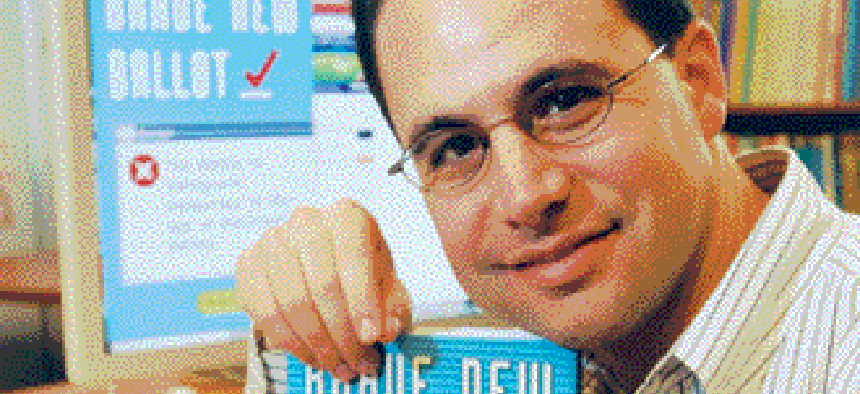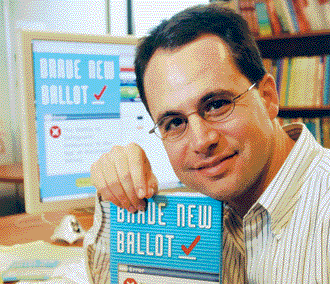A vote of no confidence

Systems face uphill battle to sway electorate.
Many Republicans and Democrats in Maryland can agree on one thing: They have so little faith in the state's electronic voting system, that they're recommending voters use paper absentee ballots rather than go to the polls on Election Day.Former Democratic gubernatorial candidate Douglas Duncan plans to vote absentee, and both Duncan and Gov. Robert Ehrlich (R) are encouraging citizens do the same.While politicians may not agree with IT companies' assessment of the reliability of computer-based voting systems, there is a national desire to develop and refine them.It's not clear when funds will become available to pay for new systems, said Michelle Miller, a senior analyst at government market research firm Input Inc., Reston, Va."The high times seem to have been between 2003 and 2005, when the technology was fresh on the market," said Jason Sajko, an Input analyst who specializes in state and local services.The federal government provided about $300 million on the heels of the 2002 Help America Vote Act, which was designed to help localities phase out punch-card and lever voting machines."There's not a whole lot going on right now, and I think until the vendor market can really convince people that their products are safe and secure, we'll probably see only purchases at the local levels on an as-needed basis," Sajko said.The new model for voting machines may not be based on computers and software, said Aviel Rubin, a computer science professor at Johns Hopkins University and author of "Brave New Ballot," an account of his discovery of Diebold Inc. voting machine security glitches, published in September by Morgan Road Books of New York.Voting systems run the gamut in the United States from fully manual, with voters marking a paper ballot, to fully automatic, with the whole process computerized.In the aftermath of the 2000 presidential election and the "hanging chads" controversy, the number of automatic systems, those with direct recording electronics, rose to about 39 percent of all voting machines in use.Most automated voting machines have touch-screens and store votes on memory cards. Rubin's home state of Maryland has such machines.Officials at Diebold, one of the best known providers of automated voting systems, did not respond to multiple interview requests. Other major offerers of voting technology include Election Systems and Software Inc. (ES&S), Hart InterCivic Inc. and Sequoia Voting Systems Inc., and they did provide Washington Technology with information."I think Maryland's system is probably among the worst in the country," Rubin said. "These systems don't allow for any audit capabilities. They can't perform recounts. And since they are fully software based, if anything were to go wrong in terms of a bug or somebody rigging the software, there would be no way to know it. I think they don't inspire a lot of confidence."An event as common as a bad thunderstorm could affect a fully automatic system, Rubin said. If power were out for more than four hours on Election Day, the machines couldn't be used, and those that were already on potentially could lose votes, he said."Another scenario is: A manufacturer hires a programmer who is a spy for another country, and that person puts something in the software that switches votes from the party they don't like to the party that they do like," Rubin said.Manufacturers said they have taken security measures to avoid such scenarios.Security features for iVotronic Election Systems and Software's touch-screen voting system include proprietary hardware with a unique ballot activator. The system is incompatible with third-party peripheral equipment, and it uses proprietary, non-Windows-based software. The Omaha, Neb., company has also introduced a voter-verifiable paper audit trail option for the iVotronic system.Despite improvements to computer-based voting systems, the idea of fully automated systems needs to be abandoned to ensure election results are reliable, Rubin said."Even if it wasn't for the security concerns, I would be leery of a system that is electronic that doesn't have a paper backup," he said. "What they're doing in Maryland now, because the primary went so badly, is they printed up 1.6 million paper ballots, which they're going to bring to the precincts as a backup if the machines don't work."Rubin said a paper-based system will have an error rate, as would any other system, but the crucial difference between paper- and computer-based machines is that with paper, the error rate is detectable. With the computer-based machines, there is no way to detect the error rate, he said."The people that make them just say, 'Well, they're perfect,' but I don't think anybody really believes that," he said.Despite problems with computer-based voting, some systems show promise, Rubin said. One he supports is based on ballot-marking technology.Voters use a computerized touch-screen to select candidates, but the machine doesn't count votes. Instead, it marks a paper ballot that the voter can review. The paper ballot is fed through an optical scanner to count votes."That technology, if implemented correctly, can really give you the best of all worlds," Rubin said. "The voter touches spots on a screen to vote, but it's still a paper-based system."ES&S' AutoMARK system uses the ballot-marking technology that Rubin described. It also has features that make it easier for people with disabilities to vote. For example, voters who are unable to use a touch-screen or touchpad can use the system's sip-and-puff tube to cast their votes, and an audio function lets voters with impaired vision listen to choices.While developing new voting systems falls to technology companies, it is important to remember the government heavily regulates the industry, said Phillip Braithwaite, vice president of Hart InterCivic. Even with that constraint, new solutions are on the way, he said.One promising technology is delivering ballots electronically, whether by e-mail or some other Internet solution. Another area that could be developed is to allow more flexibility as to where and when people vote."I ought to be able to go down to my grocery store and get my ballot and vote, whether that store is in my precinct or not," Braithwaite said.Just as some localities are testing out early voting, Braithwaite said technology may help make flexible voting centers possible.Technology companies that want to be a part of the next wave of voting machines need to follow up with states to stay aware of what systems they'll accept and which ones they'll reject."There is a huge movement in this country away from these electronic voting systems. We're going to have a bill in Maryland to outlaw them," Rubin said. "Nationally, there is a bill in Congress to do the same. And there are going to be a couple of other bills I know about to require paper trails on voting systems."

No electronics?
Paper isn't perfect
Staff Writer Doug Beizer can be reached at dbeizer@postnewsweektech.com.

Aviel Rubin, a Johns Hopkins University computer science professor, wrote "Brave New Ballot," about his discovery of security glitches in electronic voting machines.
Rick Steele
No electronics?
Paper isn't perfect
Staff Writer Doug Beizer can be reached at dbeizer@postnewsweektech.com.
NEXT STORY: Fear and loathing